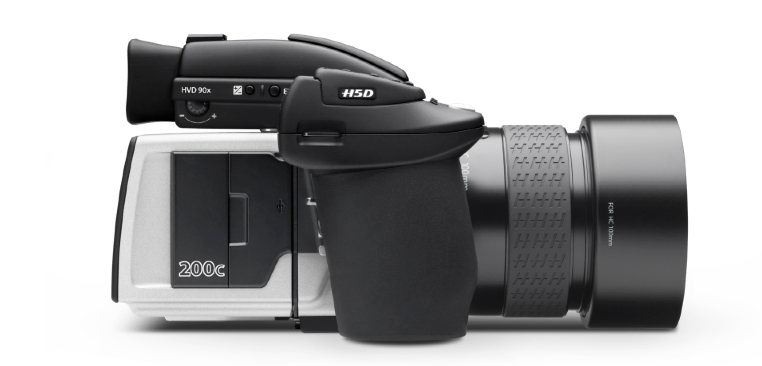New Gear: Hasselblad H5D 200c Multi-Shot Makes 200-Megapixel Photos
How do 600 MB Tiff files sound?

We may earn revenue from the products available on this page and participate in affiliate programs. Learn more ›
The trend in medium-format digital photography at the moment is the switch from CCD sensors to CMOS. Hasselblad is continuing in that direction, but now they’re offering their Multi-Shot technology on their newest sensor, making it capable of churning out photos at up to 200-megapixels.
Designed for studio, product, and still-life photographers (for whom medium format cameras are the norm), the H5D 200c actually achieves its massive file size in a clever way. Here’s the official explanation from Hasselblad:
Hasselblad Multi-Shot cameras use a 50 megapixel sensor mounted onto our patented symmetrical multi-shot frame, which positions the sensor with extreme accuracy, using piezoelectrical actuators. The camera then captures 4 or 6 shots, by moving the sensor 1 and 1/2 pixel at the time, to create a 50 or 200 megapixel capture.
So, rather than taking a single 50-megapixel shot, the camera actually takes several slightly different shots, then mashes them together to get maximum detail and color accuracy. They also say that the process helps get rid of other photographic detractors, like moire.

A six-shot image will produce a Tiff file that takes up roughly 600 MB for each image. The way it works is actually pretty clever. When the sensor moves over by a pixel, each pixel is now under a different color filter in the Bayer array. So, with each shot, each pixel is picking up specific color information about a scene. Because of this, the camera doesn’t need to interpolate to compensate for each pixel only recording one color. In a way, it’s similar to how Sigma’s Foveon sensor records data for each color at the same time.
Practically speaking, almost none of us will ever buy one of these. They typically cost about as much as a very nice car (The H4D version was roughly $45,000), so even the high-end pros typically rent them.
Still, it’s nice to see Hasselblad working hard to serve the people who live and die by their cameras.
